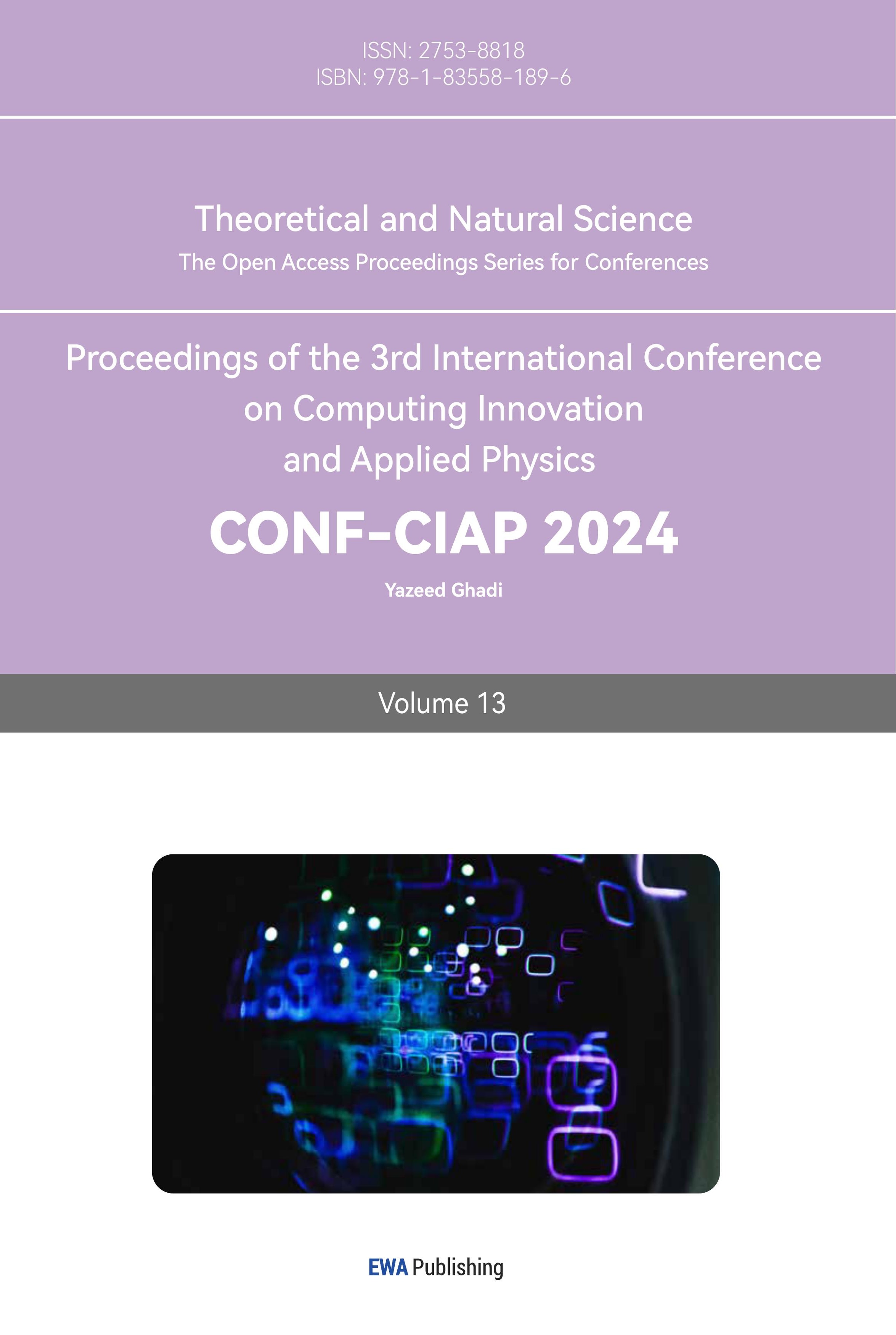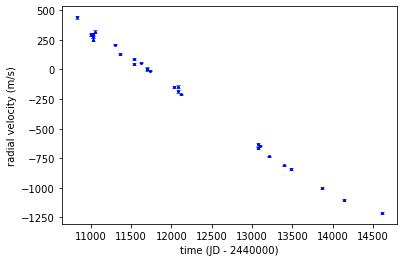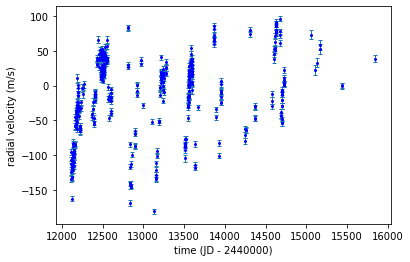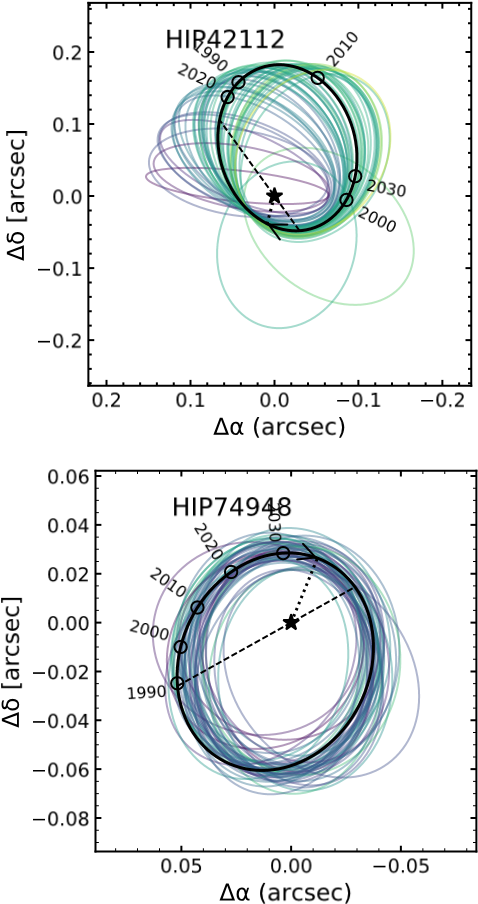1. Introduction
For centuries, humans have wondered if a habitable planet exists at the other end of the universe and whether other life forms have developed there. However, due to the need for extreme instrumental precision and challenging technical problems, studies related to exoplanets have only been launched a few decades ago. In 1995, the first exoplanet 51 Pegasi b was confirmed. It is a gas giant orbiting a main sequence star, which has a period of only four days [1]. The properties of exoplanets, particularly their orbits and masses, can provide valuable insights into the mechanisms of their host planetary systems and help determine their habitability. This project aims to enhance our understanding of the properties of exoplanets and stellar companions, thereby facilitating further related research.
Hipparcos satellite operated its first mission from 1989 to 1993, scanning over 100,000 stars [2], forming the “Hipparcos Catalog”. Every single star was measured around 100 times from various directions of the satellite, and each measurement limits the position more effectively in one direction than in an orthogonal one. The fit of the epoch’s astrometry yields the five-parameter fit and covariance matrix [3]. The Tycho Catalogue, the lower precision version including over 1 million stars, was published simultaneously, while its upgraded version, Tycho-2, containing over 2.5 million stars, was published in 2000 [4]. Gaia, the heritor of Hipparcos, launched in 2013 and has measured over 1.2 billion stars [5]. It has a larger charge-coupled device, so its resolution is higher than Hipparcos [6]. Due to the 24-year time baseline of Hipparcos and Gaia, these two missions together create the most precise proper motions for most stars.
Hipparcos-Gaia Catalogue of Accelerating stars (HGCA) is a cross-calibrated catalogue of Hipparcos and Gaia astrometry, which includes the second Gaia data release (DR2) and the Hipparcos proper motion to this frame as well as the scaled Hipparcos-Gaia DR3 positional discrepancies. Moreover, The Hipparcos’ proper motions were measured at an epoch near 1991.25 while the Gaia DR2 proper motions were at an epoch near 2015.5. The time difference of 2 observations in Hipparcos gives a 24-year long baseline, which supplies three proper motions, and most stars can be measured [3]. Exoplanets with extended periods (10-25 years) can be more easily detected. One approach used to gather stellar companion data is the astrometry method. The astrometry method aims to measure the precise position of a star in the sky and inspect how it will change over time. With the help of high-precision observation instruments, a periodic wobble induced by a planet of its host star can be detected. The minimum mass of an exoplanet that can be detected is inversely proportional to its distance from the star. A space-based observation instrument usually has a higher precision than a ground-based instrument. However, the limitation of such a method is that the photometric centre can be deviated due to the distance to the star and the irregularity of the star spots. Moreover, the planet must be observed for at least one orbital period.
Another approach to observing the candidate stars is the radial velocity method. If the spectrum of a star periodically changes from blue-shifted to red-shifted, then blue-shifted again, it is almost certain that a companion orbits around the star. Such phenomenon is due to the Doppler effect as each other’s gravity pulls the star and its companion, and a periodical movement can be calculated by such spectrum change.
The Lick project of searching planets started in 1987. An iodine cell and the Hamilton Spectrograph were used to observe the first spectrum of Tau Ceti [7]. This project observes exoplanets with orbital periods from days to decades. The Lick project discovered the Upsilon Andromedae system, the first main sequence star system with multiple planets and the 70 Virginis, the first eccentric system with an exoplanet. These discoveries have improved our understanding of planet formation and orbital migration. The project’s data enable quantification of the relationship between gas giant frequency and host star metal abundance.
In this project, we systematically select a combination of stars from the HGCA and radial velocity stars from the Lick Observatory (Lick) and determine their orbit solutions and companion masses using the orvara Python package. We discuss suitable radial velocity candidates in Section 2.1 and briefly elaborate the orbit fit and process of posterior parameters in Section 2.2. In Section 3, several symbolic candidates are chosen for detailed discussion.
2. Methodology
2.1. Target selection
We select HGCA stars by limiting their Hipparcos-Gaia cross-correlated chi-squared value [3] to over 25. For the selection of RV stars, we consider the number of observations (>10 observations) and the baseline (>10 years) to ensure sufficient orbit coverage. Targets with a linear trend or insufficient data points are excluded. In the case of RV stars with a linear trend, we perform orbit fitting if archived relative astrometry data is available. However, each selection method has its own bias. The 25-year baseline of HGCA averages out short-period companions, making only long-period companions distinguishable. Due to current technical limitations, the RV method can only detect massive and more distant companions. Consequently, our target selection is primarily biased towards more prominent and more distant companions.
By limiting the chi-squared value of HGCA candidates and cross-comparing from the lick database, the initial 46 candidate stars are selected. A further filter is operated due to the radial velocity timeline of candidate stars. We examine candidate stars by plotting their radial velocity curves to check if an acceleration pattern of the star movement exists. At last, we select 16 targets that exhibit clear RV acceleration trends and discard 30 stars without an RV trend. Below is an example of a comparison:
|
|
|
|
Figure 1. Radial velocity versus time plot. Top left: HIP27913. This plot shows two clean inflexion points, indicating a long-period companion’s existence. Top right: HIP75039. The radial velocity plot gives a straight line. In this case, it is almost impossible to find a massive companion. Bottom left: HIP96441. This plot can be caused by a companion with a relatively short period. However, such points can be considered as noises in the orbit fitting part. Bottom right: HIP72659. Not enough point in the plot gives a bad result of orbit fitting. Therefore, this plot is also abandoned.
For HIP27913, its radial velocity curve has two obvious inflexion points. Therefore, a back-and-forth movement of the host star can be identified. For HIP75039, its radial velocity curve is almost a straight line; it can be judged that no companion is orbiting this star. For HIP96441, though the plot contains enough data points, most of these points can be the noise that influences the simulation result. For HIP72659, more data points are needed in the plot to constitute a curve showing the star’s periodical movement. Therefore, only HIP27913 is kept for further data analysis among these four candidates. At last, a total of 16 stars is selected from the initial 46 candidate stars.
2.2. Orbit fitting
Orbit fitting in this project involves data processing and image plotting. Orvara, an open-source Python package, is utilized to fit Keplerian orbit solutions using any combination of radial velocity, relative astrometry, and absolute astrometry data [8]. With orvara, it is possible to obtain precise masses and, in some cases, orbital parameters with just a small fraction of an orbit. Orvara uses ptemcee [9,10] to execute a parallel-tempered MCMC. In every step of the chain, it uses htof [11] to simulate the position and proper motion of the host star concerning the centre of the gravity of the system, as seen with the Hipparcos and Gaia intermediate data. Then, orvara computes the likelihood of each orbit, with radial velocity, HGCA absolute astrometry and relative astrometry given. Orvara has multiple inputs. For orvara, we include astrometry data from HGCA and radial velocity data from Lick. Also, the primary mass of the host star is required.
First, we need to check if the radial velocity series trends as in the example above. It is usually difficult to find an orbital solution for the radial velocity series not showing the acceleration pattern. Relative astrometry is added to achieve a better solution for the poor orbital coverage situation cases, especially of no-trend or with great signal-to-noise ratio lines. We only apply the relative astrometric data for those in the Washington Double Star database. This step supplies relative separation and position angle. Another source of relative astrometry is Gaia. It provides proper motion in the right ascension and declination of the secondary mass, including its error and correlation. If a secondary stellar companion of the host star is verified in Gaia, the “companion ID” parameter needs to be set to 0 (an initial negative number ignores the rest of this). Five parameters of the secondary star that need to be input are proper motion in right ascension direction, proper motion in declination direction, errors of these two parameters and the correlation between proper motion in right ascension and proper motion in declination. These can be obtained from Gaia data release 3 (Gaia DR3) [6,12]. Priors on primary mass are also necessary for each host star. In the configuration file, we need to input the mass (in units of solar) and its error, as well as the maximum and minimum jitter. These are obtained from Finley et al., Holberg et al., Kervella et al. and Mann et al. [13-16].
This work assumes all systems contain only a 2-body Keplerian fit so that we can reduce the complexity of the simulation. For each of the 16 candidate stars, we run the MCMC with 30 temperatures in the parallel tempering chain, 100 walks for every temperature and 100,000 steps in every walk. The number of planets is set to 1. To check and visualise fitting result, the diagnostic plots, corner plots and astrometric/RV orbit plots are generated for further analysis.
In this work, we solved the Keplerian orbit for 16 systems, including 11 stellar and five sub-stellar companions, where we used 0.09 Jupiter mass as the separation. We report detailed MCMC results in Table 3 and discuss substellar companions in Section 3. Corner plots, astrometric prediction, and RV orbit of substellar companions are included in Section 3 and Appendix.
3. Results and discussion

Figure 2. Semi-major axis of companions versus their masses \( {M_{Jup}} \) . Companions with larger masses or distances from the host star usually have more significant errors in both parameters.
|
|
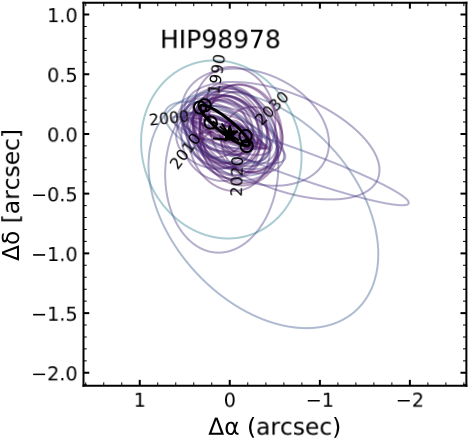
Figure 3. Predicted astrometric orbit of companions. The star symbol represents the position of the host star. The black line indicates the orbit of the companion with the highest likelihood. Small circles along the black line with year numbers show their position along the orbit. Coloured lines are possible orbit distributions with different companion masses around the host star. The dashed line indicates the intersection between the sky and orbit planes. The dotted line connects the companion’s periastron and the host star.

Figure 4. Radial velocity orbits of all five companions over the full best-fitting orbital period. Red dots are the radial velocity measurements. The thick black line shows the radial velocity orbit with the most possible likelihood. Lines with other fainter colours are randomly generated from the posterior distributions.
Table 1. Results from all 16 candidate stars were obtained by processing orvara. Among these candidates, five companions with relatively low masses are listed prior. This table gives critical parameters of companions generated from orvara. Further analysis of these data is in Section 3.
HIP ID | Jit (m/s) | Primary mass (M☉) | Secondary mass (M☉) | Semi-major axis (AU) | Inclination (deg) | Period (yrs) | Eccentricity |
Substellar Companions | |||||||
42112 | \( 18.4_{-2.4}^{+2.2} \) | \( 1.300_{-0.064}^{+0.064} \) | \( 0.075_{-0.011}^{+0.009} \) | \( 6.80_{-0.21}^{+0.20} \) | \( 132.6_{-13.0}^{+5.4} \) | \( 15.14_{-0.58}^{+0.46} \) | \( 0.629_{-0.020}^{+0.018} \) |
49699 | \( 8.3_{-1.0}^{+1.2} \) | \( 0.868_{-0.043}^{+0.043} \) | \( 0.007_{-0.001}^{+0.001} \) | \( 4.04_{-0.14}^{+0.12} \) | \( 140.0_{-114.0}^{+19.0} \) | \( 8.71_{-0.40}^{+0.29} \) | \( 0.908_{-0.180}^{+0.069} \) |
74948 | \( 93.1_{-0.8}^{+1.8} \) | \( 1.330_{-0.067}^{+0.067} \) | \( 0.031_{-0.005}^{+0.006} \) | \( 2.44_{-0.05}^{+0.05} \) | \( 149.0_{-128.0}^{+8.7} \) | \( 3.26_{-0.05}^{+0.05} \) | \( 0.362_{-0.081}^{+0.080} \) |
98819 | \( 11.9_{-1.0}^{+1.1} \) | \( 1.100_{-0.054}^{+0.055} \) | \( 0.081_{-0.009}^{+0.011} \) | \( 14.95_{-0.40}^{+0.44} \) | \( 95.0_{-2.9}^{+3.0} \) | \( 53.10_{-1.60}^{+1.90} \) | \( 0.596_{-0.055}^{+0.042} \) |
98978 | \( 10.2_{-1.8}^{+2.2} \) | \( 1.185_{-0.060}^{+0.060} \) | \( 0.087_{-0.041}^{+0.082} \) | \( 21.50_{-7.80}^{+13.00} \) | \( 63.0_{-27.0}^{+33.0} \) | \( 89.00_{-43.00}^{+88.00} \) | \( 0.280_{-0.190}^{+0.250} \) |
Stellar Companions | |||||||
10321 | \( 18.0_{-2.2}^{+2.3} \) | \( 1.000_{-0.050}^{+0.050} \) | \( 0.268_{-0.009}^{+0.009} \) | \( 8.33_{-0.14}^{+0.13} \) | \( 161.0_{-0.3}^{+0.3} \) | \( 21.34_{-0.15}^{+0.15} \) | \( 0.387_{-0.006}^{+0.006} \) |
12114 | \( 5.9_{-0.7}^{+0.8} \) | \( 0.799_{-0.040}^{+0.040} \) | \( 0.094_{-0.011}^{+0.014} \) | \( 14.60_{-1.50}^{+2.20} \) | \( 38.7_{-8.6}^{+21} \) | \( 59.30_{-8.50}^{+13.00} \) | \( 0.625_{-0.088}^{+0.140} \) |
27913 | \( 28.1_{-4.4}^{+5.7} \) | \( 1.081_{-0.054}^{+0.054} \) | \( 0.160_{-0.006}^{+0.006} \) | \( 6.28_{-0.10}^{+0.10} \) | \( 85.9_{-0.7}^{+0.7} \) | \( 14.12_{-0.05}^{+0.05} \) | \( 0.465_{-0.012}^{+0.012} \) |
42488 | \( 15.3_{-2.4}^{+2.6} \) | \( 1.158_{-0.058}^{+0.058} \) | \( 0.445_{-0.029}^{+0.034} \) | \( 8.99_{-0.22}^{+0.23} \) | \( 155.3_{-1.4}^{+1.4} \) | \( 21.29_{-0.45}^{+0.49} \) | \( 0.768_{-0.011}^{+0.014} \) |
44458 | \( 34.9_{-9.2}^{+13.0} \) | \( 1.156_{-0.059}^{+0.060} \) | \( 0.350_{-0.200}^{+0.800} \) | \( 52.00_{-17.00}^{+35.00} \) | \( 63.1_{-5.3}^{+5.0} \) | \( 290.00_{-114.00}^{+275.00} \) | \( 0.310_{-0.210}^{+0.350} \) |
68682 | \( 49.9_{-0.1}^{+0.1} \) | \( 1.045_{-0.052}^{+0.053} \) | \( 0.628_{-0.019}^{+0.019} \) | \( 5.44_{-0.08}^{+0.08} \) | \( 96.3_{-0.5}^{+0.5} \) | \( 9.80_{-0.01}^{+0.01} \) | \( 0.709_{-0.004}^{+0.004} \) |
73593 | \( 13.1_{-1.4}^{+1.6} \) | \( 1.236_{-0.062}^{+0.062} \) | \( 0.460_{-0.025}^{+0.190} \) | \( 11.40_{-0.39}^{+2.20} \) | \( 137.0_{-26.0}^{+16.0} \) | \( 29.40_{-1.10}^{+7.20} \) | \( 0.672_{-0.083}^{+0.081} \) |
85007 | \( 15.6_{-1.4}^{+1.6} \) | \( 1.156_{-0.057}^{+0.058} \) | \( 0.240_{-0.020}^{+0.022} \) | \( 19.50_{-3.00}^{+5.10} \) | \( 146.1_{-14.0}^{+8.6} \) | \( 73.00_{-16.00}^{+30.00} \) | \( 0.577_{-0.058}^{+0.083} \) |
103455 | \( 13.4_{-1.4}^{+1.6} \) | \( 1.158_{-0.058}^{+0.058} \) | \( 0.488_{-0.015}^{+0.015} \) | \( 19.73_{-0.63}^{+0.68} \) | \( 164.2_{-0.1}^{+0.1} \) | \( 68.30_{-3.00}^{+3.40} \) | \( 0.772_{-0.007}^{+0.008} \) |
113086 | \( 18.0_{-1.8}^{+2.1} \) | \( 1.299_{-0.064}^{+0.064} \) | \( 0.173_{-0.023}^{+0.027} \) | \( 27.60_{-6.90}^{+15.00} \) | \( 122.0_{-11.0}^{+14.0} \) | \( 120.00_{-41.00}^{+109.00} \) | \( 0.550_{-0.120}^{+0.140} \) |
113994 | \( 10.0_{-0.9}^{+1.1} \) | \( 1.347_{-0.067}^{+0.066} \) | \( 0.292_{-0.010}^{+0.010} \) | \( 6.87_{-0.11}^{+0.10} \) | \( 122.5_{-1.5}^{+1.4} \) | \( 14.08_{-0.05}^{+0.05} \) | \( 0.581_{-0.001}^{+0.001} \) |
3.1. HIP42112
HIP42112 is an F8 main sequence star 52.456 parsecs away from our solar system [17]. Lick provides 24 radial velocity observations, giving a clear motion trend. Our fitting result implies there is a companion at a distance of \( 6.80_{-0.21}^{+0.20} \) AU. Patel et al. [18] first reported this companion’s existence, with a potential mass between 52 and 60 \( {M_{Jup}} \) , which is a brown dwarf. Comparing our result with Patel et al. [18], the companion’s period and eccentricity are constrained within the reasonable range.
3.2. HIP49699
HIP49699 is a K0 main sequence star 18.292 parsec away [17]. It has an effective surface temperature of 4,980K [19]. The companion of HIP49699 (HD87883) is an exoplanet with mass constrained around 7.5 \( {M_{Jup}} \) , located \( 4.04_{-0.14}^{+0.12} \) AU away from the host star. Fischer et al. [19] first revealed this exoplanet prior to the 2007 publication of the HIRES/Keck RVs, and later it was named HD87883b. However, due to insufficient coverage of the orbital phase near the periastron, the eccentricity of the companion is computed poorly (e = 0.53). In Li et al. [20]’s and our work, we both use extra radial velocity data to simulate a more precise orbit. As a result, the eccentricities are obtained to be 0.72 [20] and 0.91 in this work. Moreover, a further set of radial velocity data will also help build a better orbit simulation.
3.3. HIP74948
HIP74948 is an F7 main sequence star with a distance of 50.475 parsecs [17]. The star’s apparent magnitude of 6.93 makes it too faint to be easily seen with the naked eye [21]. Same as HD87883b, it was first discovered by Fischer et al. [22]. Different from this work (M = 1.33M⊙) and Allende Prieto & Lambert [23] (M = 1.31M⊙), the mass of the host star was computed to be M = 1.18M⊙ and eventually an average mass of 1.24 M⊙ was taken. A Keplerian model is well fitted, and the period of this companion is therefore P = 1209 ± 24 days and eccentricity equals 0.37 ± 0.025 [22]. In 2007, radial velocity analysis of HET HRS data [24] is released, and a combination with previous work is performed. A total span of 10.3 years of radial velocity data gives an amended period, which is 3.25 years [25]. Our result matches this work well, which lies within the uncertainty range.
3.4. HIP98819
HIP98819, also known as 15 Sagittae, is 57.96 light years away from the Sun [17], in the northern constellation Sagitta. With its apparent visual magnitude of 5.80, it may be seen with the naked eye as a weak, yellow-hued star [21]. The companion is a brown dwarf whose mass is firstly estimated to be at least 48 \( {M_{Jup}} \) [26]. Moreover, it differs from our work. It has a semi-major axis of 21 AU, an eccentricity of 0.3, and an inclination of 51◦. However, more than ten years of observation have found that the orbit of the brown dwarf is more eccentric when viewed from the near edge. When it was first discovered, it seemed to be moving in a circular orbit, but now it is closer to the primary orbit when viewed from the earth [27].
3.5. HIP98978
HIP98978 is a G0 main sequence star with a distance of 50.581 parsecs. The posterior distribution is shown in Figure 5. This companion is a brown dwarf, which has not been mentioned in previous work yet. Therefore, we claim a new brown dwarf candidate discovery. This new candidate has a mass of \( 0.087_{-0.041}^{+0.082} \) of the solar mass. Its semi-major axis is \( 21.50_{-7.80}^{+13.00} \) AU (in our solar system, this lies between Saturn and Pluto). This brown dwarf’s orbit has a low eccentricity, at \( 0.280_{-0.190}^{+0.250} \) , which implies it has a steady orbit. Eccentricities of planets can reflect their history of formation and orbiting dynamics. According to Bowler et al. [28], companions directly imaged are distributed among different eccentricity stages. Brown dwarfs usually have higher eccentricities at long orbital periods. For a giant planet with long periods, their eccentricities peak around e = 0.23, and e = 0.5 for brown dwarfs with close orbits (<30 AU). The result of the companion candidate of HIP98978 shows that although it has a close orbit, its period is unclear, with too much uncertainty variation. To identify more details of this companion, further observations are still needed to increase the precision of its orbital parameters.
4. Conclusion
This paper uses the orvara package to extract the orbital solution of 16 different systems from HGCA and Lick. For a detailed discussion, we select the five lowest mass targets as substellar companions, using 0.09 Jupiter mass as the separation. In these five examples, only one result, the companion in the HIP98978 system, has not yet been mentioned in previous work. Thus, according to its properties, we claim the discovery of a new brown dwarf candidate. Some parameters deviate significantly from the existing data because the sample size is not large enough in this work. With more astrometry solutions from Gaia DR3 and later releases, these companions can be built with more accurate analysed data by repeating analysing steps in orvara.
Acknowledgements
This work has made use of data from the European Space Agency (ESA) mission Gaia (https://www.cosmos.esa.int/gaia), processed by the Gaia Data Processing and Analysis Consortium (DPAC, https://www.cosmos.esa.int/web/gaia/dpac/consortium). Funding for the DPAC has been provided by national institutions, in particular the institutions participating in the Gaia Multilateral Agreement.
Appendix
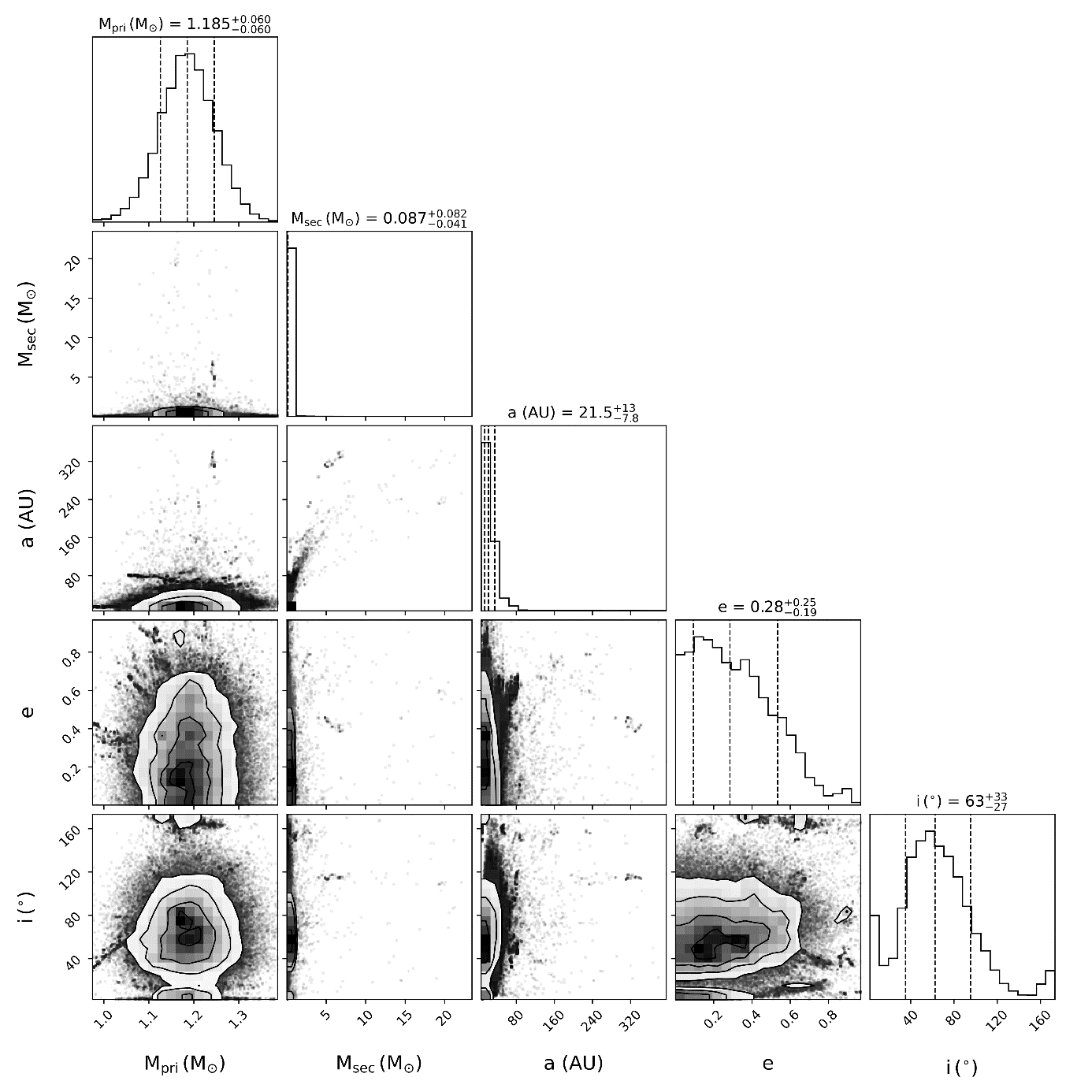
Figure 5. Posterior distribution of parameters of companion of HIP98978.
References
[1]. Mayor, M., Queloz, D. A Jupiter-mass companion to a solar-type star. Nature 378, 355–359 (1995).
[2]. ESA, The HIPPARCOS and TYCHO catalogues. Astrometric and photometric star catalogues derived from the ESA HIPPARCOS Space Astrometry Mission, ESA Special Publication, 1997, vol. 1200.
[3]. Brandt, T. D., The Hipparcos-Gaia Catalog of Accelerations, The Astrophysical Journal Supplement Series, vol. 239, no. 2, 2018.
[4]. Høg, E., The Tycho-2 catalogue of the 2.5 million brightest stars, Astronomy and Astrophysics, vol. 355, pp. L27–L30, 2000.
[5]. Gaia Collaboration, Gaia Data Release 2. Summary of the contents and survey properties, Astronomy and Astrophysics, vol. 616, 2018.
[6]. Gaia Collaboration, The Gaia mission, Astronomy and Astrophysics, vol. 595, 2016.
[7]. Fischer, D. A., Marcy, G. W., and Spronck, J. F. P., The Twenty-five Year Lick Planet Search, The Astrophysical Journal Supplement Series, vol. 210, no. 1, 2014.
[8]. Brandt, T. D., orvara: An Efficient Code to Fit Orbits Using Radial Velocity, Absolute, and/or Relative Astrometry, The Astronomical Journal, vol. 162, no. 5, 2021.
[9]. Foreman-Mackey, D., Hogg, D. W., Lang, D., and Goodman, J., emcee: The MCMC Hammer, Publications of the Astronomical Society of the Pacific, vol. 125, no. 925, p. 306, 2013.
[10]. Vousden, W. D., Farr, W. M., and Mandel, I., Dynamic temperature selection for parallel tempering in Markov chain Monte Carlo simulations, Monthly Notices of the Royal Astronomical Society, vol. 455, no. 2, pp. 1919–1937, 2016.
[11]. Brandt, G. M., Argafal, and Trace-Andreason, gmbrandt/HTOF: 0.4.2, Zenodo, Zenodo, 2021.
[12]. Gaia Collaboration, Gaia Data Release 3. Summary of the content and survey properties, Astronomy and Astrophysics, vol. 674, 2023.
[13]. Finley, D. S., Koester, D., and Basri, G., The Temperature Scale and Mass Distribution of Hot DA White Dwarfs, The Astrophysical Journal, vol. 488, no. 1, pp. 375–396, 1997.
[14]. Holberg, J. B., Oswalt, T. D., Sion, E. M., and McCook, G. P., The 25 parsec local white dwarf population, Monthly Notices of the Royal Astronomical Society, vol. 462, no. 3, pp. 2295–2318, 2016.
[15]. Kervella, P., Thévenin, F., Di Folco, E., and Ségransan, D., The angular sizes of dwarf stars and subgiants. Surface brightness relations calibrated by interferometry, Astronomy and Astrophysics, vol. 426, pp. 297–307, 2004.
[16]. Mann, R. K., Protoplanetary Disk Masses in the Young NGC 2024 Cluster, The Astrophysical Journal, vol. 802, no. 2, 2015.
[17]. Gaia Collaboration, VizieR Online Data Catalog: Gaia EDR3 (Gaia Collaboration, 2020), VizieR Online Data Catalog, 2020.
[18]. Patel, S. G., Fourteen New Companions from the Keck and Lick Radial Velocity Survey Including Five Brown Dwarf Candidates, The Astrophysical Journal, vol. 665, no. 1, pp. 744–753, 2007.
[19]. Fischer, D., Five Planets and an Independent Confirmation of HD 196885Ab from Lick Observatory, The Astrophysical Journal, vol. 703, no. 2, pp. 1545–1556, 2009.
[20]. Li, Y., Precise Masses and Orbits for Nine Radial-velocity Exoplanets, The Astronomical Journal, vol. 162, no. 6, 2021.
[21]. Anderson, E. and Francis, C., XHIP: An extended hipparcos compilation, Astronomy Letters, vol. 38, no. 5, pp. 331–346, 2012.
[22]. Fischer, D. A., Marcy, G. W., Butler, R. P., Vogt, S. S., Walp, B., and Apps, K., Planetary Companions to HD 136118, HD 50554, and HD 106252, Publications of the Astronomical Society of the Pacific, vol. 114, no. 795, pp. 529–535, 2002.
[23]. Allende Prieto, C. and Lambert, D. L., Fundamental parameters of nearby stars from the comparison with evolutionary calculations: masses, radii and effective temperatures, Astronomy and Astrophysics, vol. 352, pp. 555–562, 1999.
[24]. Bean, J. L., The Mass of the Candidate Exoplanet Companion to HD 33636 from Hubble Space Telescope Astrometry and High-Precision Radial Velocities, The Astronomical Journal, vol. 134, no. 2, pp. 749–758, 2007.
[25]. Martioli, E., McArthur, B. E., Benedict, G. F., Bean, J. L., Harrison, T. E., and Armstrong, A., The Mass of the Candidate Exoplanet Companion to HD 136118 from Hubble Space Telescope Astrometry and High-Precision Radial Velocities, The Astrophysical Journal, vol. 708, no. 1, pp. 625–634, 2010.
[26]. Liu, M. C., Fischer, D. A., Graham, J. R., Lloyd, J. P., Marcy, G. W., and Butler, R. P., Crossing the Brown Dwarf Desert Using Adaptive Optics: A Very Close L Dwarf Companion to the Nearby Solar Analog HR 7672, The Astrophysical Journal, vol. 571, no. 1, pp. 519–527, 2002.
[27]. Crepp, J. R., The Dynamical Mass and Three-dimensional Orbit of HR7672B: A Benchmark Brown Dwarf with High Eccentricity, The Astrophysical Journal, vol. 751, no. 2, 2012.
[28]. Bowler, B. P., Blunt, S. C., and Nielsen, E. L., Population-level Eccentricity Distributions of Imaged Exoplanets and Brown Dwarf Companions: Dynamical Evidence for Distinct Formation Channels, The Astronomical Journal, vol. 159, no. 2, 2020.
Cite this article
HUANG,X. (2023). Mass and orbital solutions of stellar companions from HGCA and lick. Theoretical and Natural Science,13,215-225.
Data availability
The datasets used and/or analyzed during the current study will be available from the authors upon reasonable request.
Disclaimer/Publisher's Note
The statements, opinions and data contained in all publications are solely those of the individual author(s) and contributor(s) and not of EWA Publishing and/or the editor(s). EWA Publishing and/or the editor(s) disclaim responsibility for any injury to people or property resulting from any ideas, methods, instructions or products referred to in the content.
About volume
Volume title: Proceedings of the 3rd International Conference on Computing Innovation and Applied Physics
© 2024 by the author(s). Licensee EWA Publishing, Oxford, UK. This article is an open access article distributed under the terms and
conditions of the Creative Commons Attribution (CC BY) license. Authors who
publish this series agree to the following terms:
1. Authors retain copyright and grant the series right of first publication with the work simultaneously licensed under a Creative Commons
Attribution License that allows others to share the work with an acknowledgment of the work's authorship and initial publication in this
series.
2. Authors are able to enter into separate, additional contractual arrangements for the non-exclusive distribution of the series's published
version of the work (e.g., post it to an institutional repository or publish it in a book), with an acknowledgment of its initial
publication in this series.
3. Authors are permitted and encouraged to post their work online (e.g., in institutional repositories or on their website) prior to and
during the submission process, as it can lead to productive exchanges, as well as earlier and greater citation of published work (See
Open access policy for details).
References
[1]. Mayor, M., Queloz, D. A Jupiter-mass companion to a solar-type star. Nature 378, 355–359 (1995).
[2]. ESA, The HIPPARCOS and TYCHO catalogues. Astrometric and photometric star catalogues derived from the ESA HIPPARCOS Space Astrometry Mission, ESA Special Publication, 1997, vol. 1200.
[3]. Brandt, T. D., The Hipparcos-Gaia Catalog of Accelerations, The Astrophysical Journal Supplement Series, vol. 239, no. 2, 2018.
[4]. Høg, E., The Tycho-2 catalogue of the 2.5 million brightest stars, Astronomy and Astrophysics, vol. 355, pp. L27–L30, 2000.
[5]. Gaia Collaboration, Gaia Data Release 2. Summary of the contents and survey properties, Astronomy and Astrophysics, vol. 616, 2018.
[6]. Gaia Collaboration, The Gaia mission, Astronomy and Astrophysics, vol. 595, 2016.
[7]. Fischer, D. A., Marcy, G. W., and Spronck, J. F. P., The Twenty-five Year Lick Planet Search, The Astrophysical Journal Supplement Series, vol. 210, no. 1, 2014.
[8]. Brandt, T. D., orvara: An Efficient Code to Fit Orbits Using Radial Velocity, Absolute, and/or Relative Astrometry, The Astronomical Journal, vol. 162, no. 5, 2021.
[9]. Foreman-Mackey, D., Hogg, D. W., Lang, D., and Goodman, J., emcee: The MCMC Hammer, Publications of the Astronomical Society of the Pacific, vol. 125, no. 925, p. 306, 2013.
[10]. Vousden, W. D., Farr, W. M., and Mandel, I., Dynamic temperature selection for parallel tempering in Markov chain Monte Carlo simulations, Monthly Notices of the Royal Astronomical Society, vol. 455, no. 2, pp. 1919–1937, 2016.
[11]. Brandt, G. M., Argafal, and Trace-Andreason, gmbrandt/HTOF: 0.4.2, Zenodo, Zenodo, 2021.
[12]. Gaia Collaboration, Gaia Data Release 3. Summary of the content and survey properties, Astronomy and Astrophysics, vol. 674, 2023.
[13]. Finley, D. S., Koester, D., and Basri, G., The Temperature Scale and Mass Distribution of Hot DA White Dwarfs, The Astrophysical Journal, vol. 488, no. 1, pp. 375–396, 1997.
[14]. Holberg, J. B., Oswalt, T. D., Sion, E. M., and McCook, G. P., The 25 parsec local white dwarf population, Monthly Notices of the Royal Astronomical Society, vol. 462, no. 3, pp. 2295–2318, 2016.
[15]. Kervella, P., Thévenin, F., Di Folco, E., and Ségransan, D., The angular sizes of dwarf stars and subgiants. Surface brightness relations calibrated by interferometry, Astronomy and Astrophysics, vol. 426, pp. 297–307, 2004.
[16]. Mann, R. K., Protoplanetary Disk Masses in the Young NGC 2024 Cluster, The Astrophysical Journal, vol. 802, no. 2, 2015.
[17]. Gaia Collaboration, VizieR Online Data Catalog: Gaia EDR3 (Gaia Collaboration, 2020), VizieR Online Data Catalog, 2020.
[18]. Patel, S. G., Fourteen New Companions from the Keck and Lick Radial Velocity Survey Including Five Brown Dwarf Candidates, The Astrophysical Journal, vol. 665, no. 1, pp. 744–753, 2007.
[19]. Fischer, D., Five Planets and an Independent Confirmation of HD 196885Ab from Lick Observatory, The Astrophysical Journal, vol. 703, no. 2, pp. 1545–1556, 2009.
[20]. Li, Y., Precise Masses and Orbits for Nine Radial-velocity Exoplanets, The Astronomical Journal, vol. 162, no. 6, 2021.
[21]. Anderson, E. and Francis, C., XHIP: An extended hipparcos compilation, Astronomy Letters, vol. 38, no. 5, pp. 331–346, 2012.
[22]. Fischer, D. A., Marcy, G. W., Butler, R. P., Vogt, S. S., Walp, B., and Apps, K., Planetary Companions to HD 136118, HD 50554, and HD 106252, Publications of the Astronomical Society of the Pacific, vol. 114, no. 795, pp. 529–535, 2002.
[23]. Allende Prieto, C. and Lambert, D. L., Fundamental parameters of nearby stars from the comparison with evolutionary calculations: masses, radii and effective temperatures, Astronomy and Astrophysics, vol. 352, pp. 555–562, 1999.
[24]. Bean, J. L., The Mass of the Candidate Exoplanet Companion to HD 33636 from Hubble Space Telescope Astrometry and High-Precision Radial Velocities, The Astronomical Journal, vol. 134, no. 2, pp. 749–758, 2007.
[25]. Martioli, E., McArthur, B. E., Benedict, G. F., Bean, J. L., Harrison, T. E., and Armstrong, A., The Mass of the Candidate Exoplanet Companion to HD 136118 from Hubble Space Telescope Astrometry and High-Precision Radial Velocities, The Astrophysical Journal, vol. 708, no. 1, pp. 625–634, 2010.
[26]. Liu, M. C., Fischer, D. A., Graham, J. R., Lloyd, J. P., Marcy, G. W., and Butler, R. P., Crossing the Brown Dwarf Desert Using Adaptive Optics: A Very Close L Dwarf Companion to the Nearby Solar Analog HR 7672, The Astrophysical Journal, vol. 571, no. 1, pp. 519–527, 2002.
[27]. Crepp, J. R., The Dynamical Mass and Three-dimensional Orbit of HR7672B: A Benchmark Brown Dwarf with High Eccentricity, The Astrophysical Journal, vol. 751, no. 2, 2012.
[28]. Bowler, B. P., Blunt, S. C., and Nielsen, E. L., Population-level Eccentricity Distributions of Imaged Exoplanets and Brown Dwarf Companions: Dynamical Evidence for Distinct Formation Channels, The Astronomical Journal, vol. 159, no. 2, 2020.





